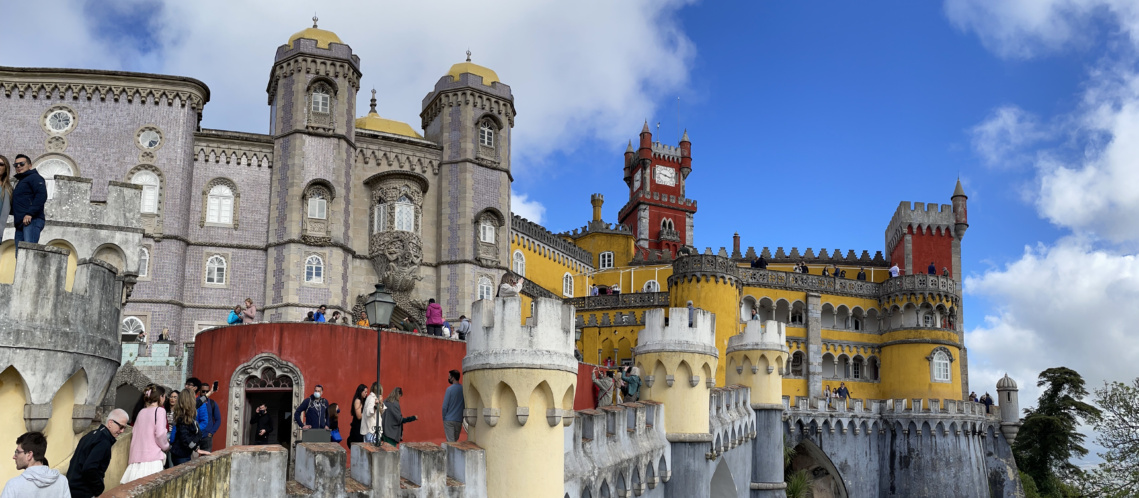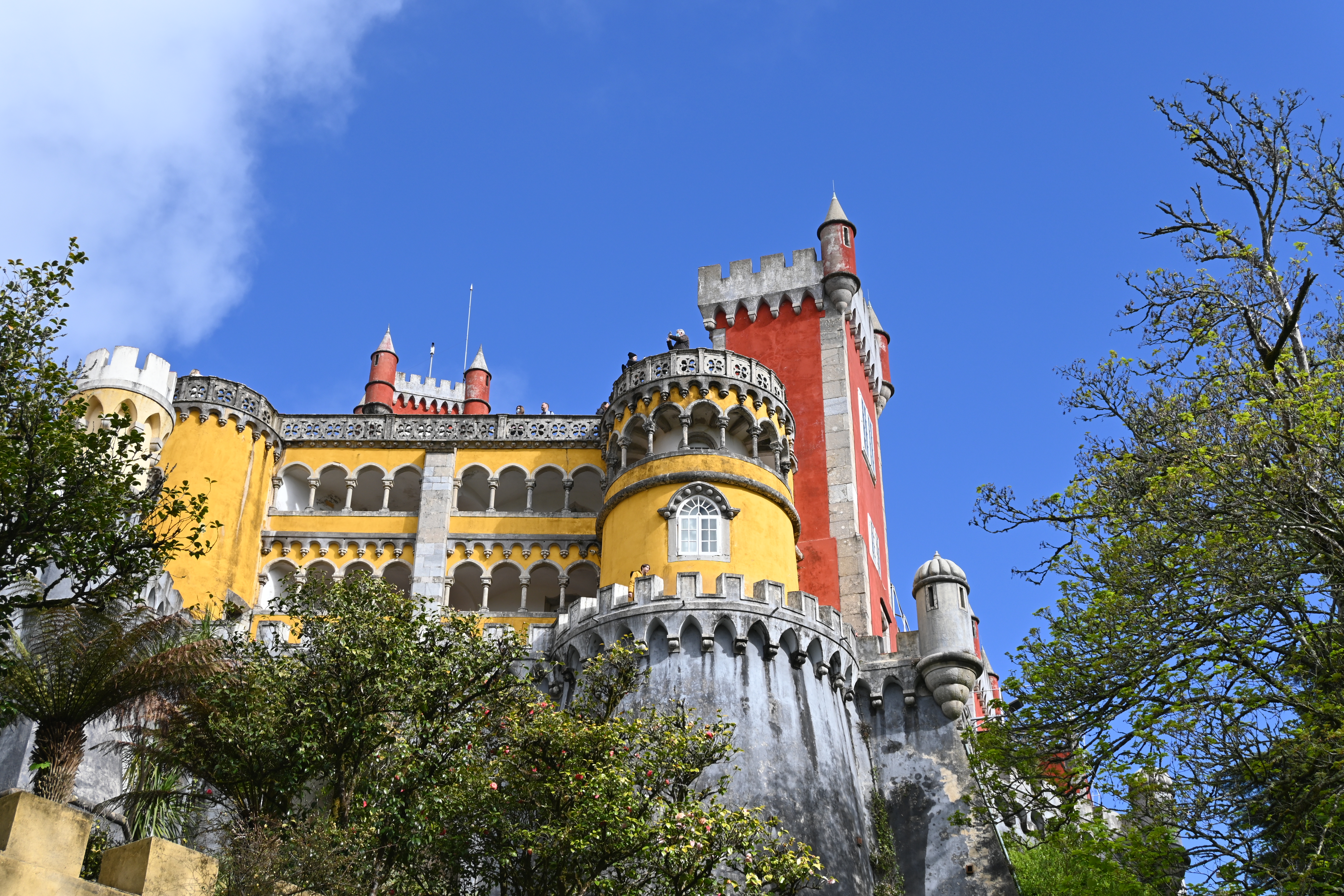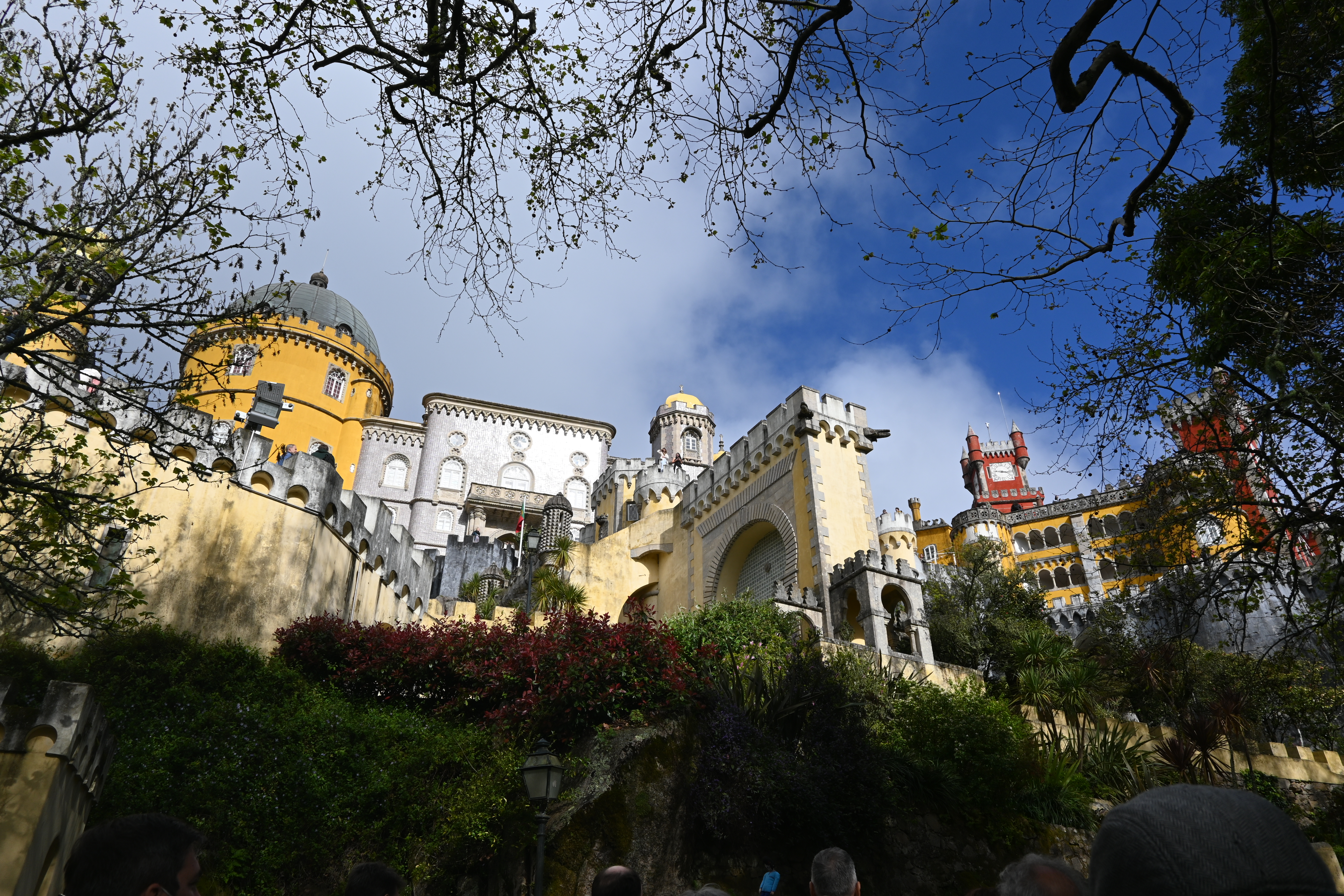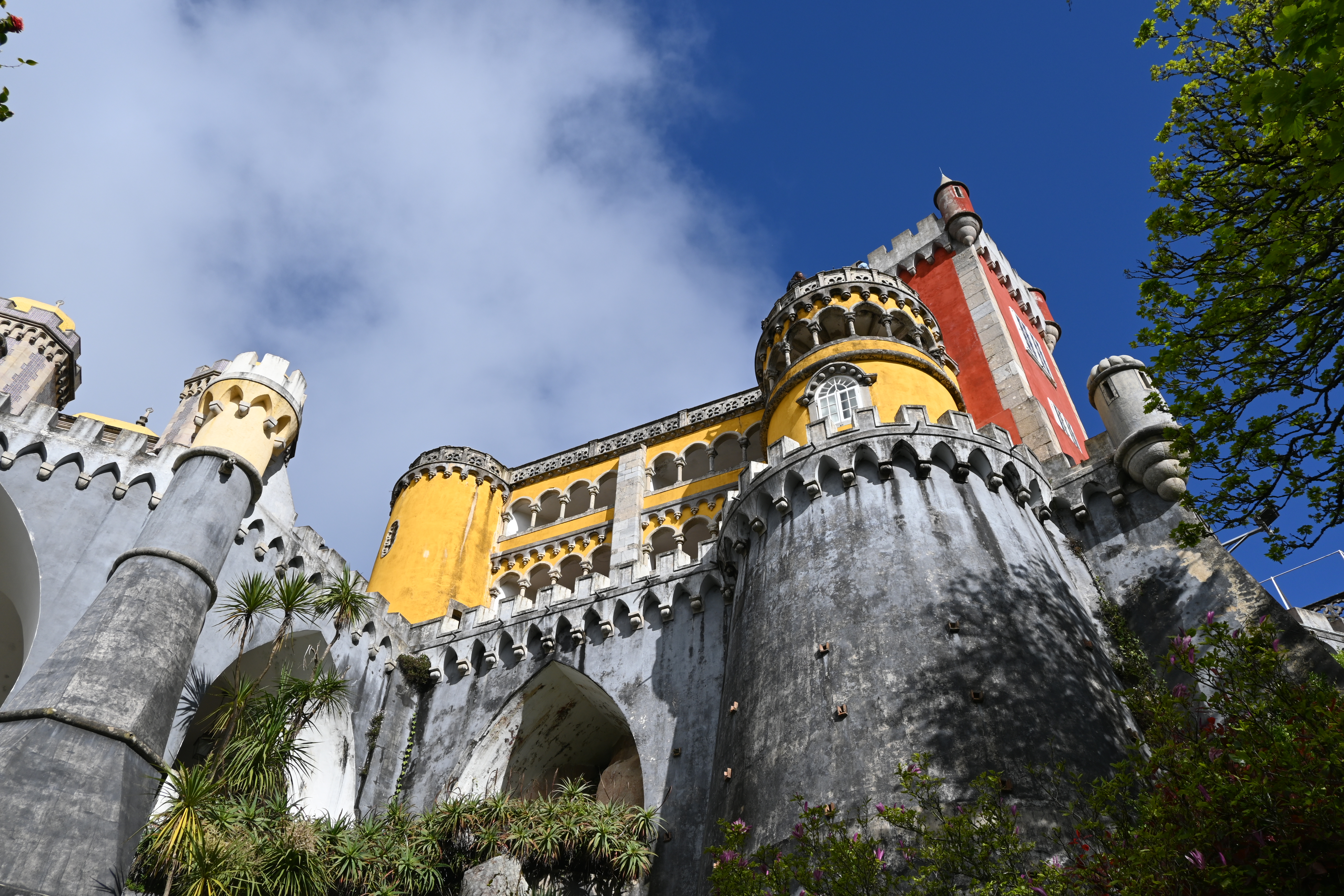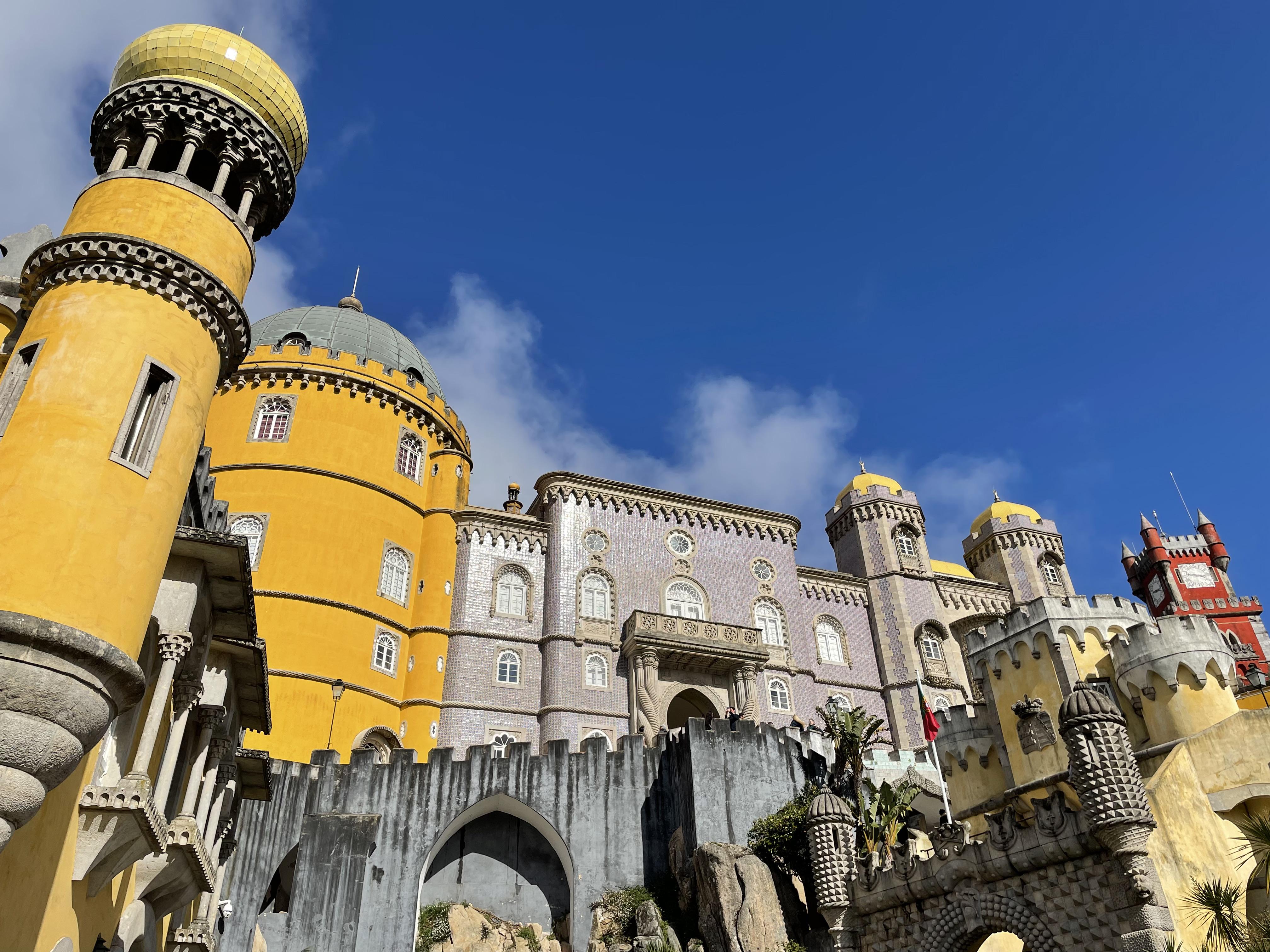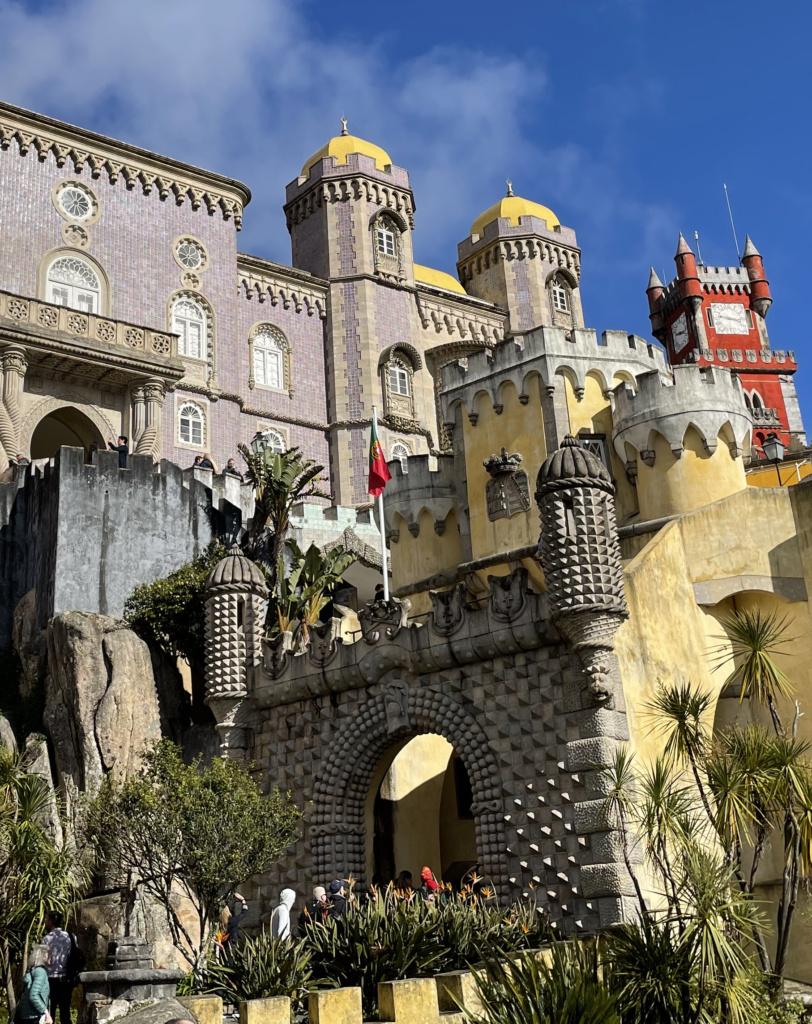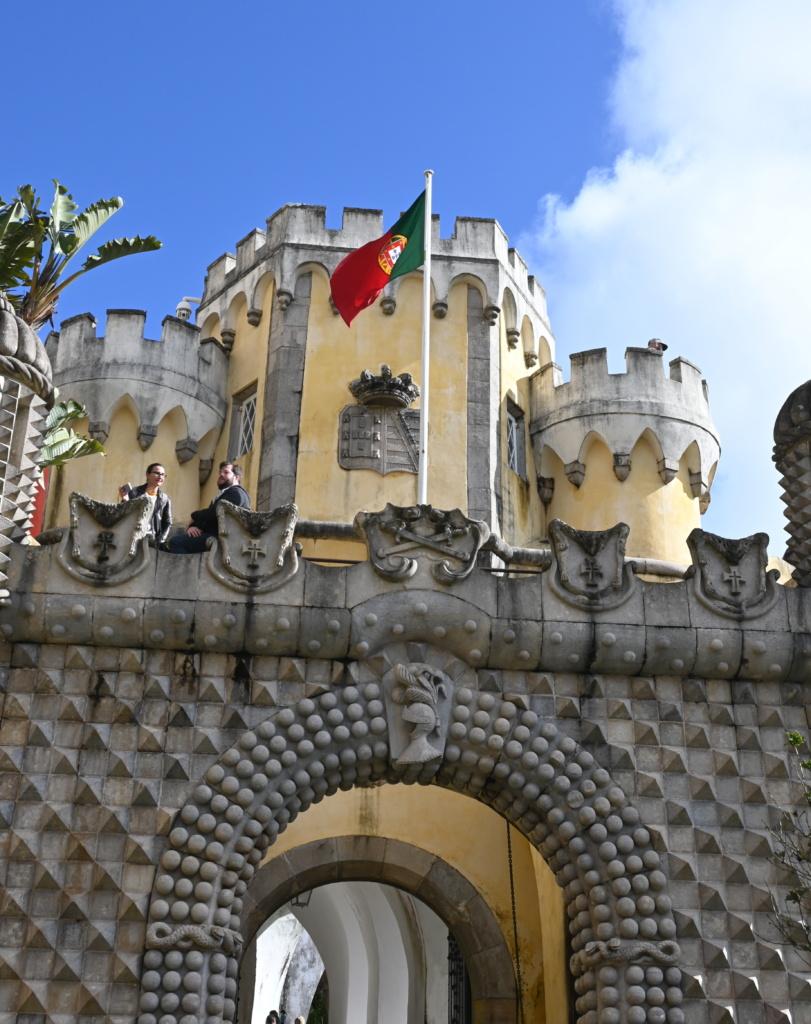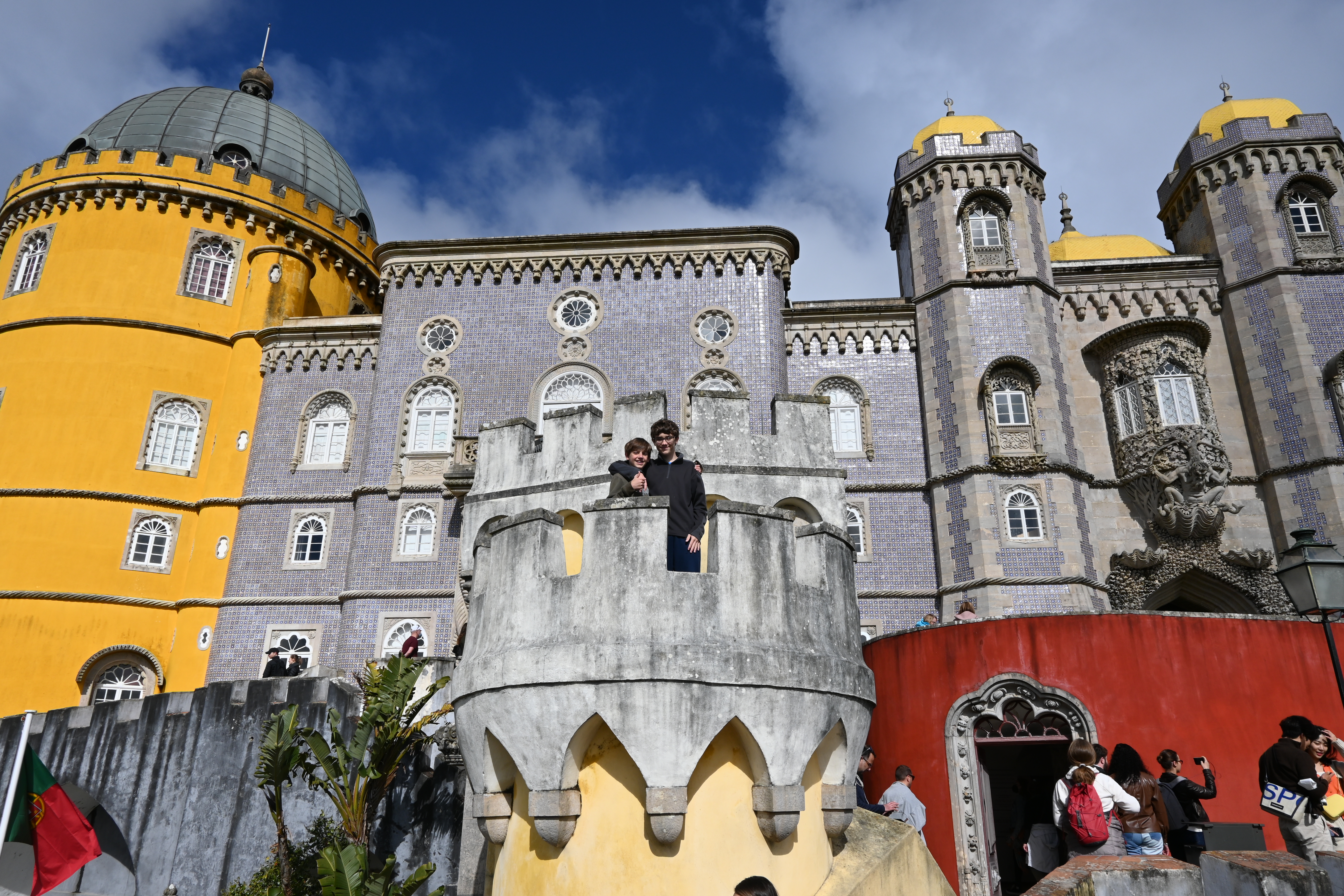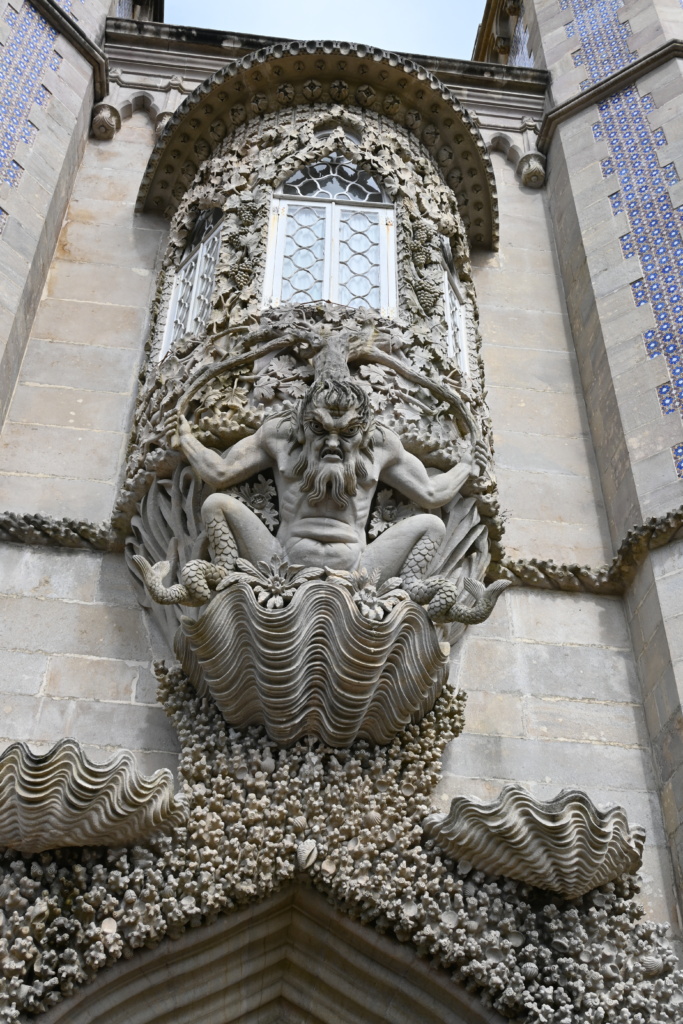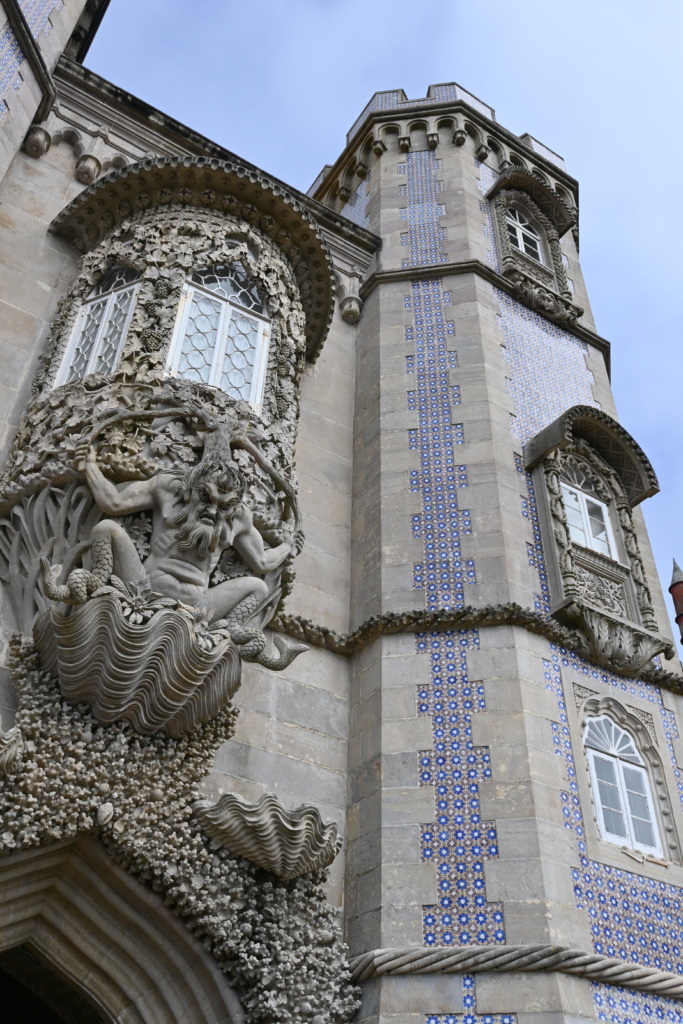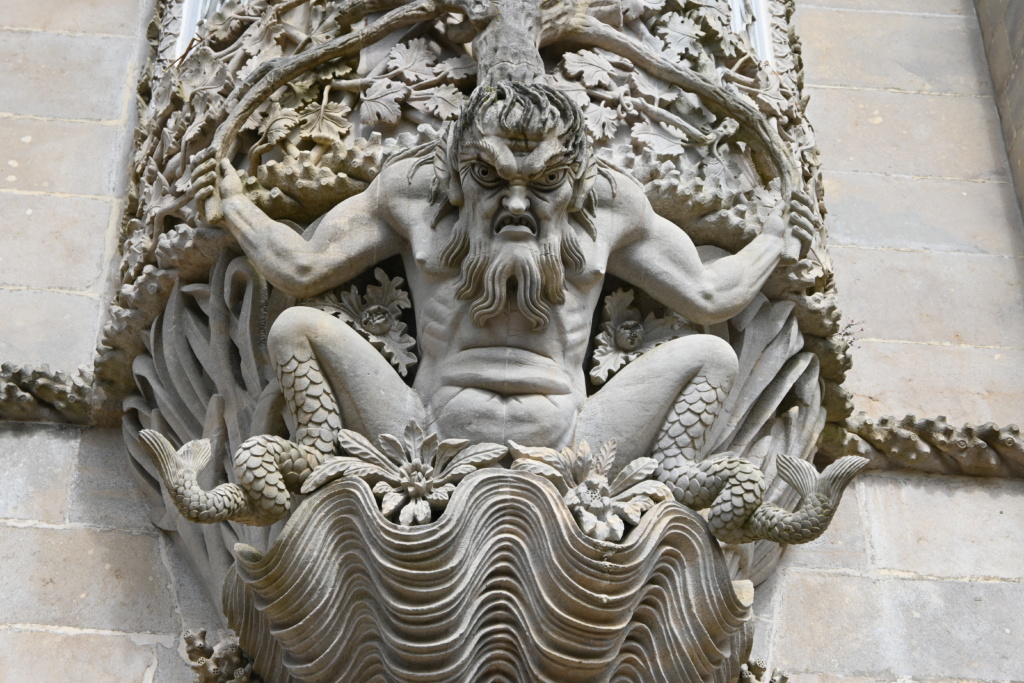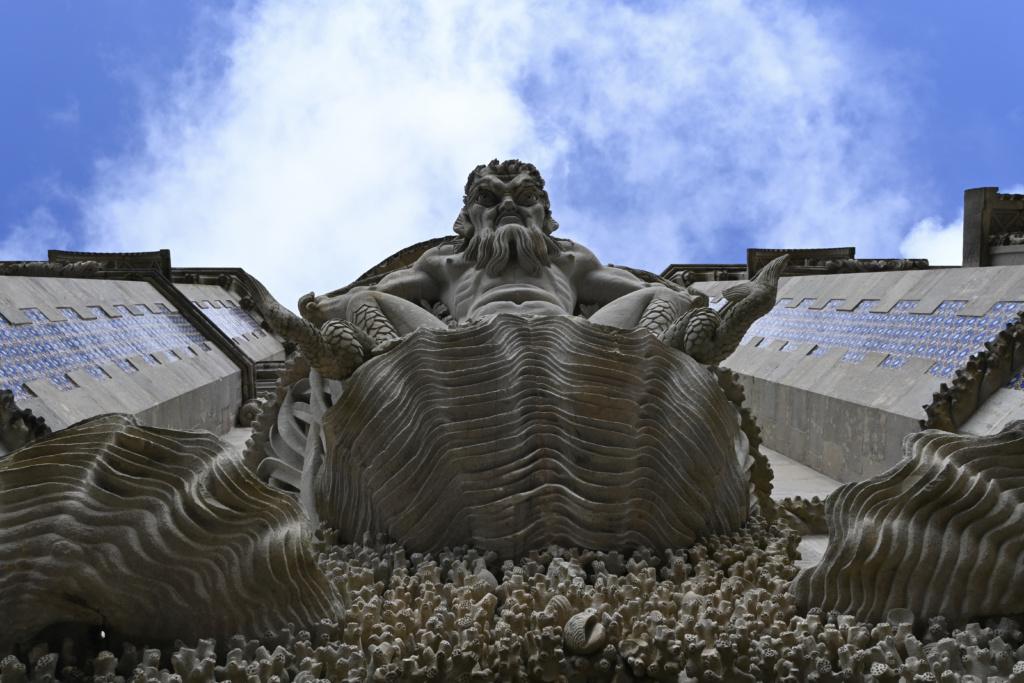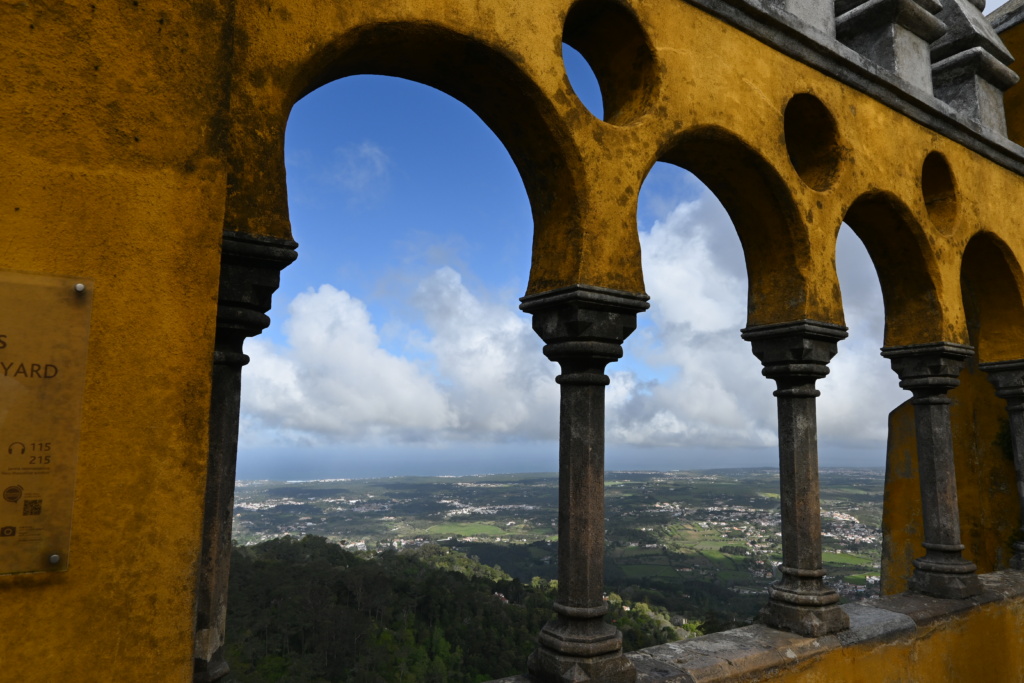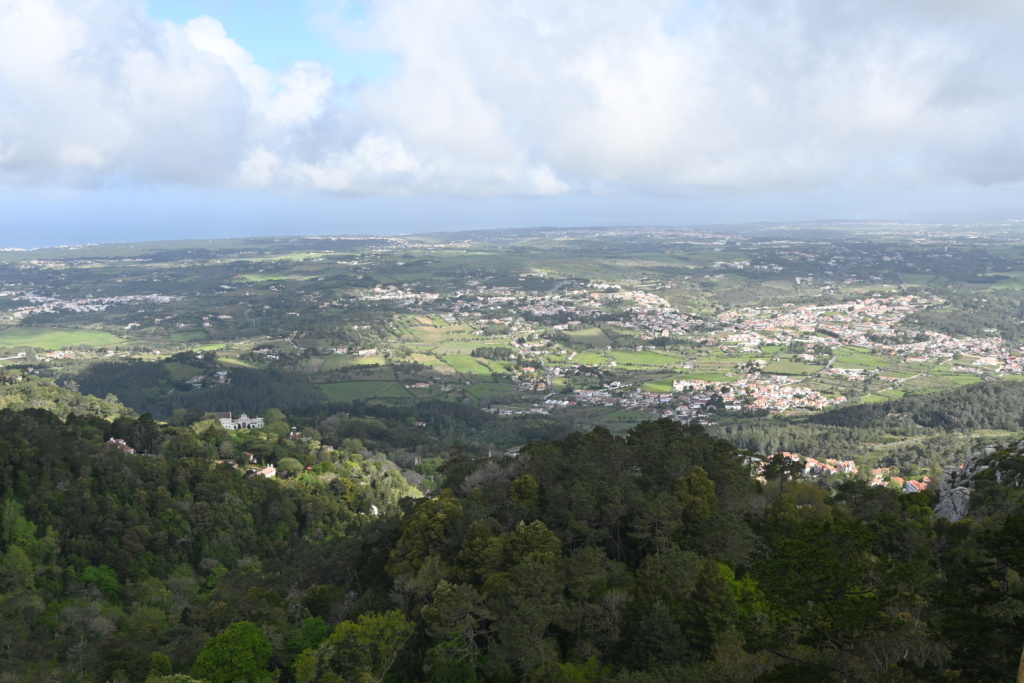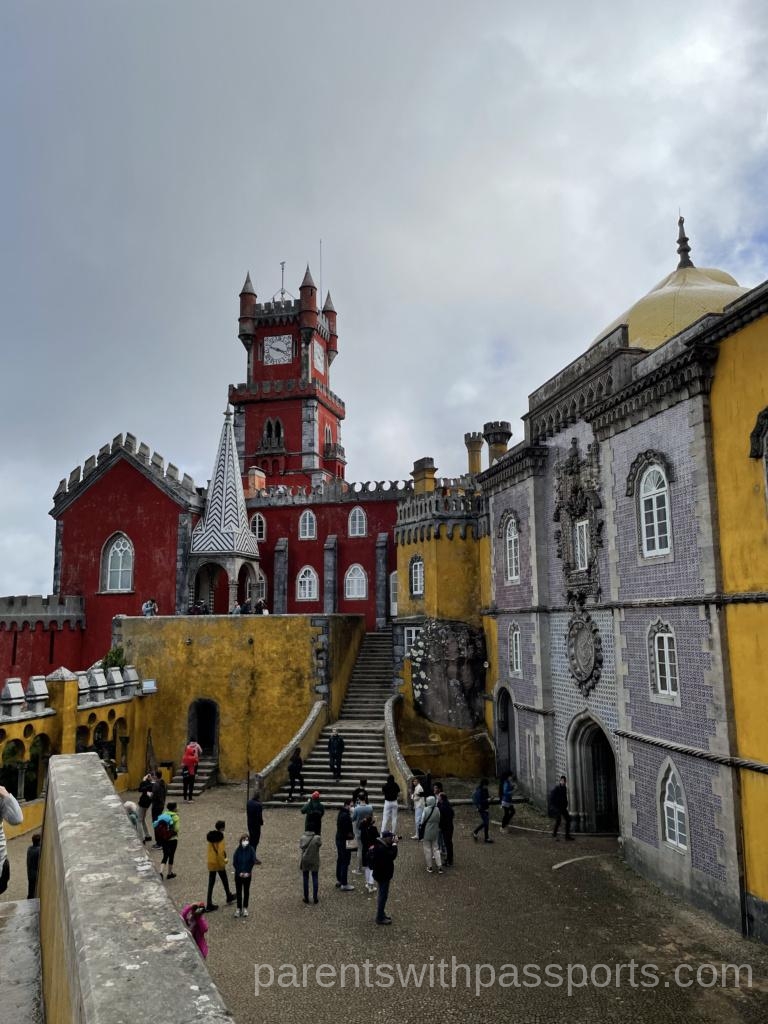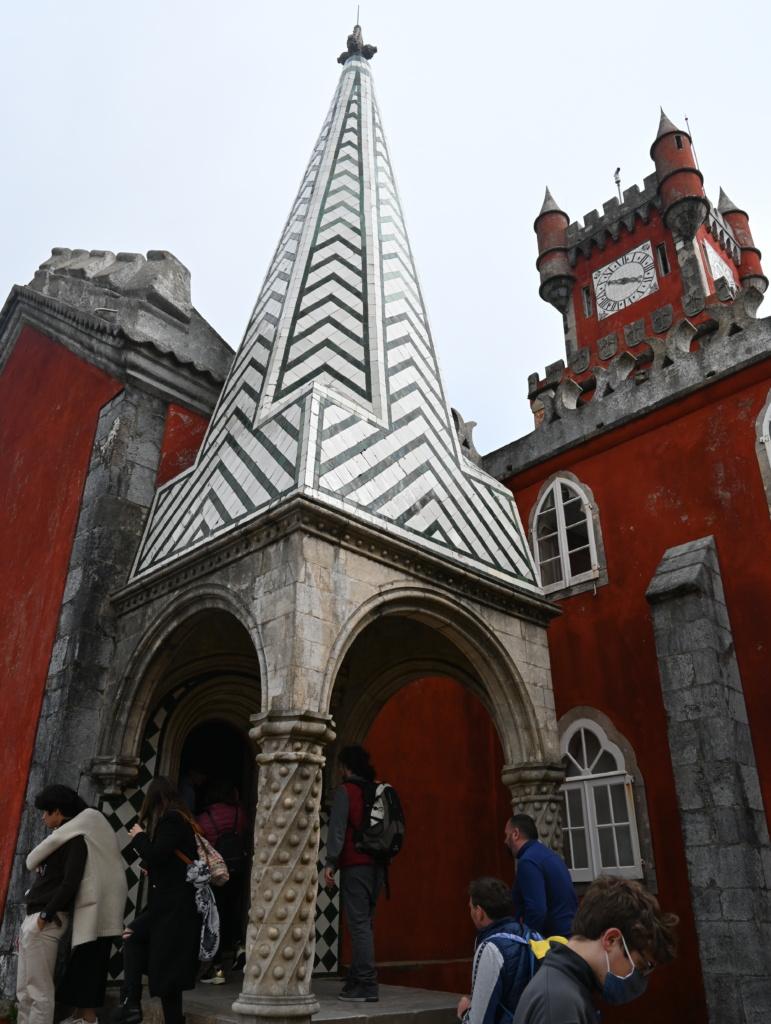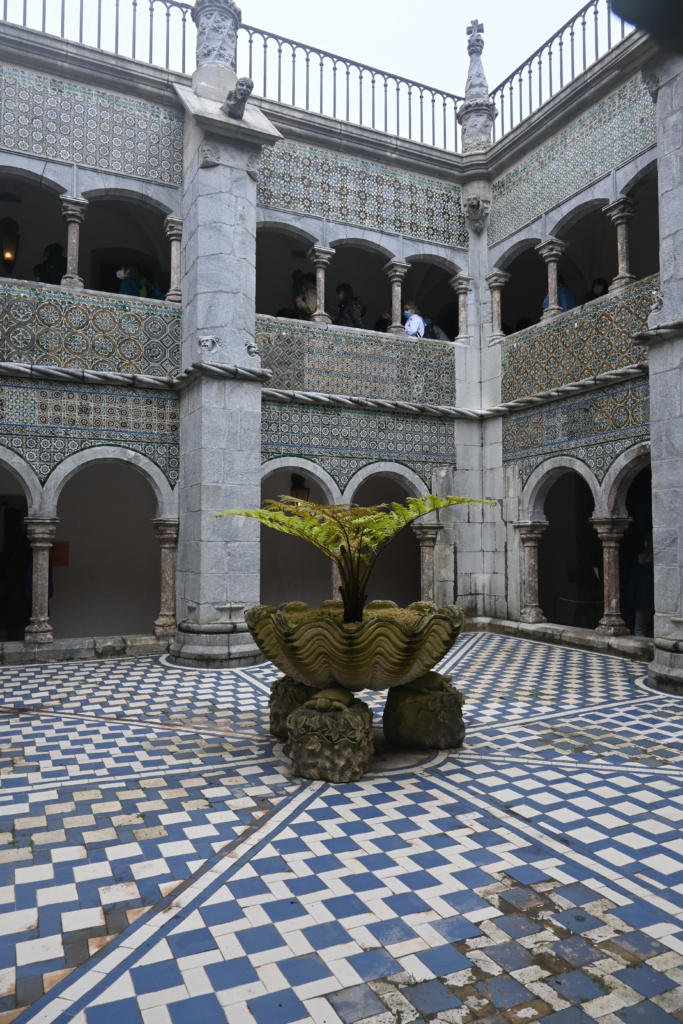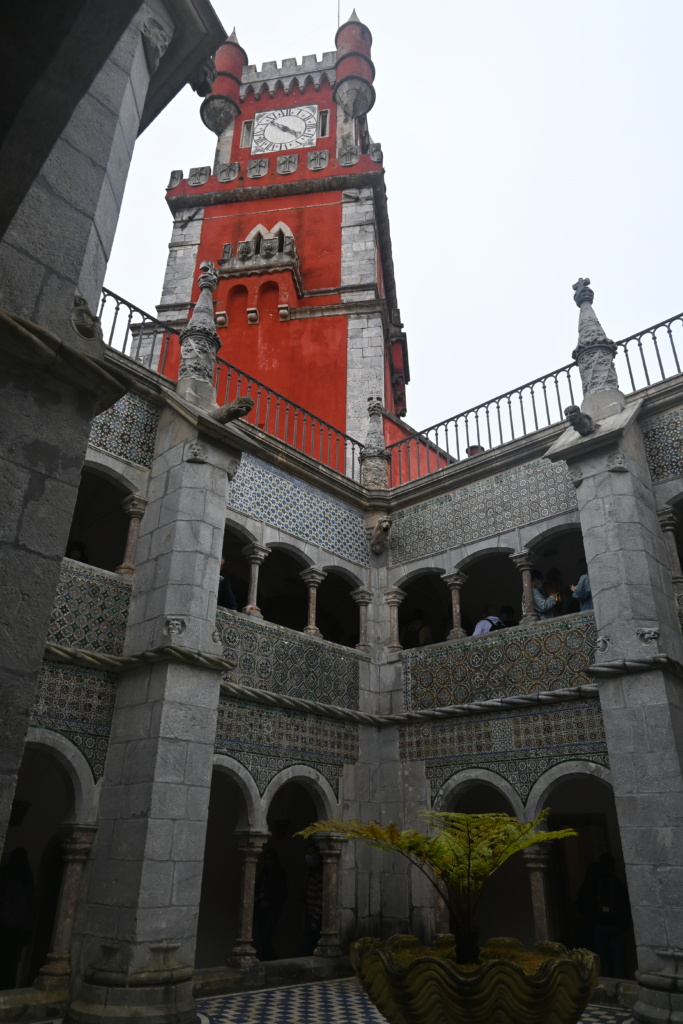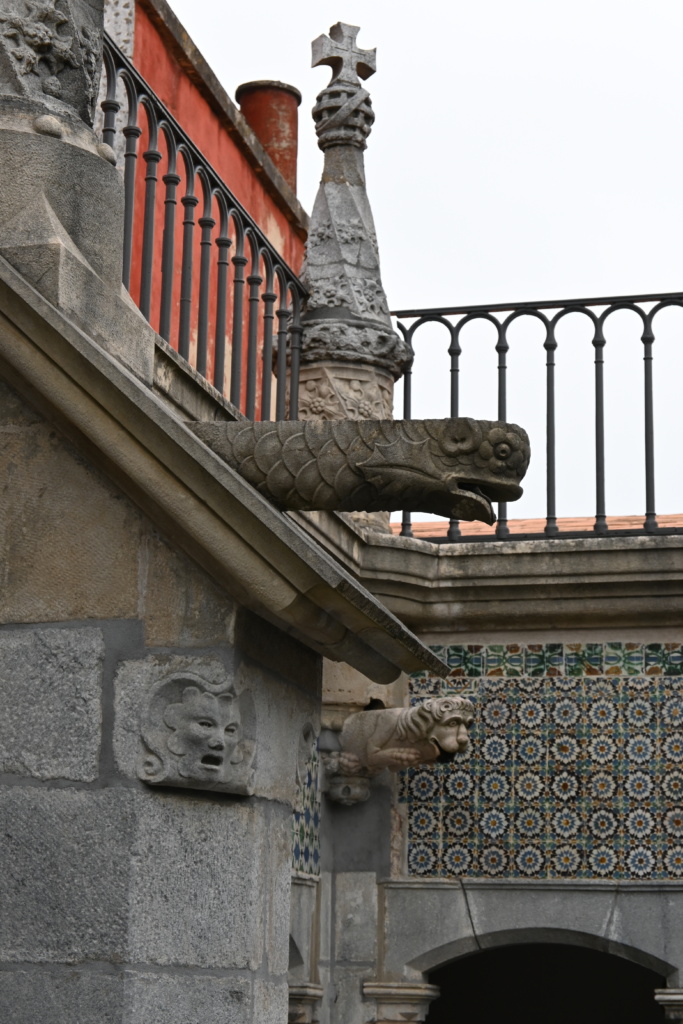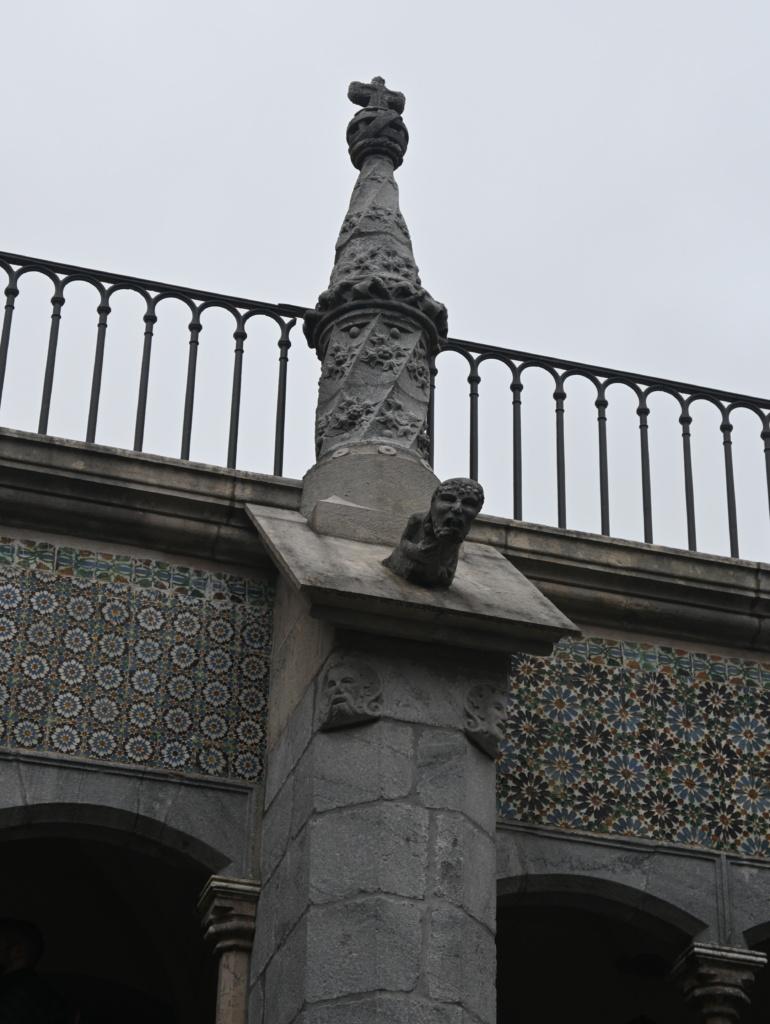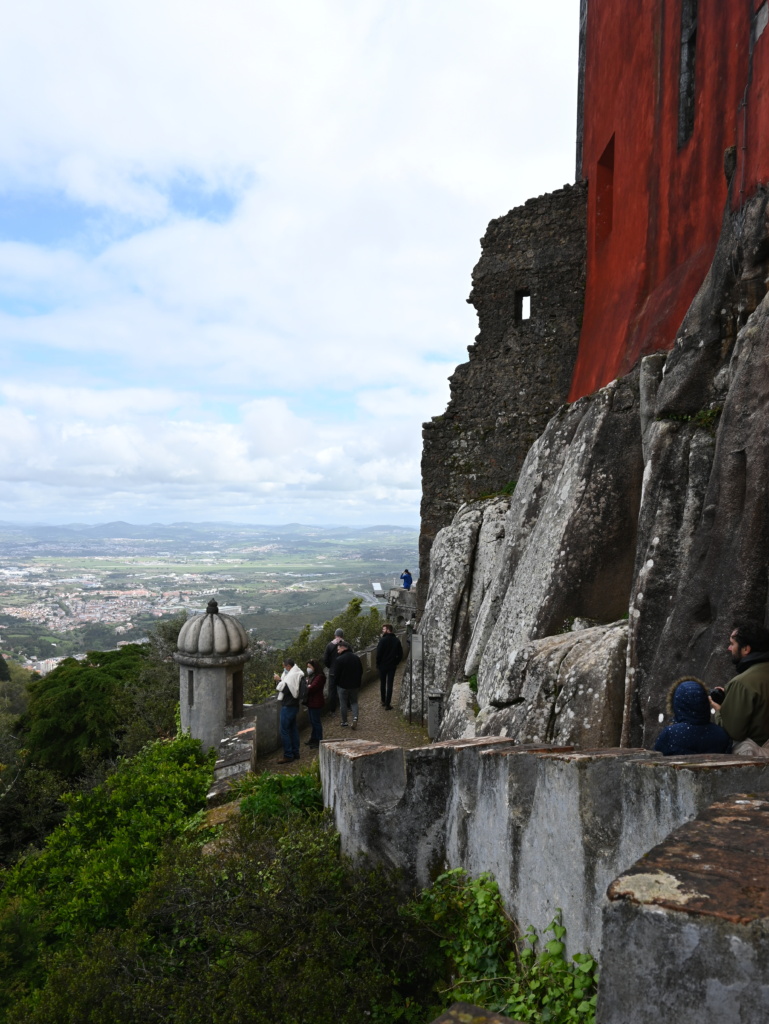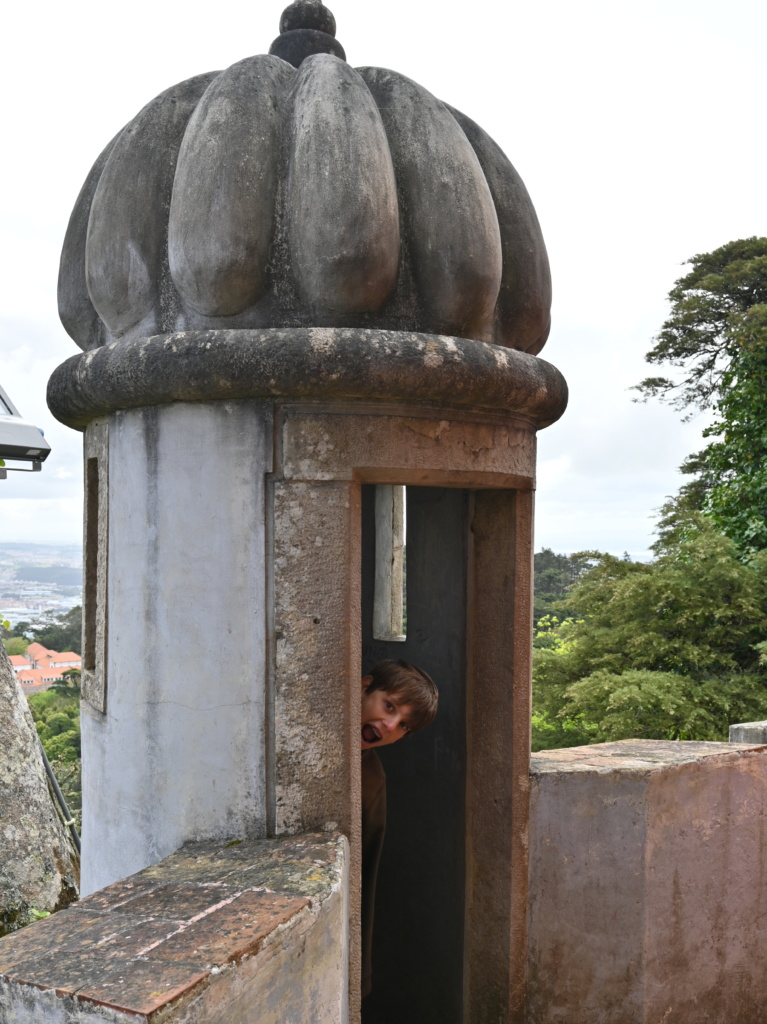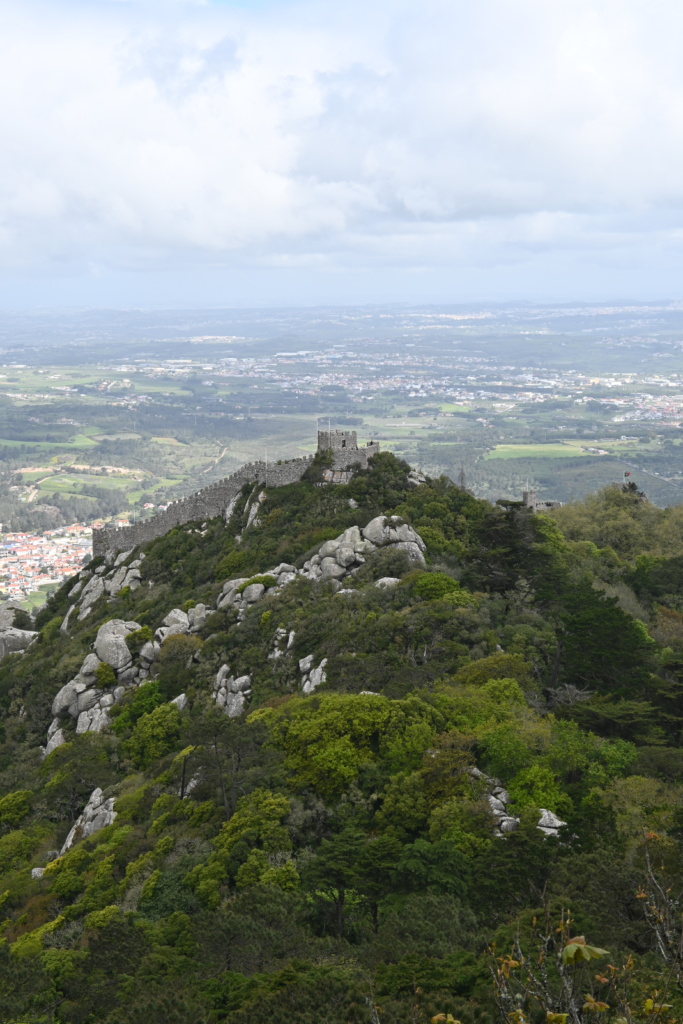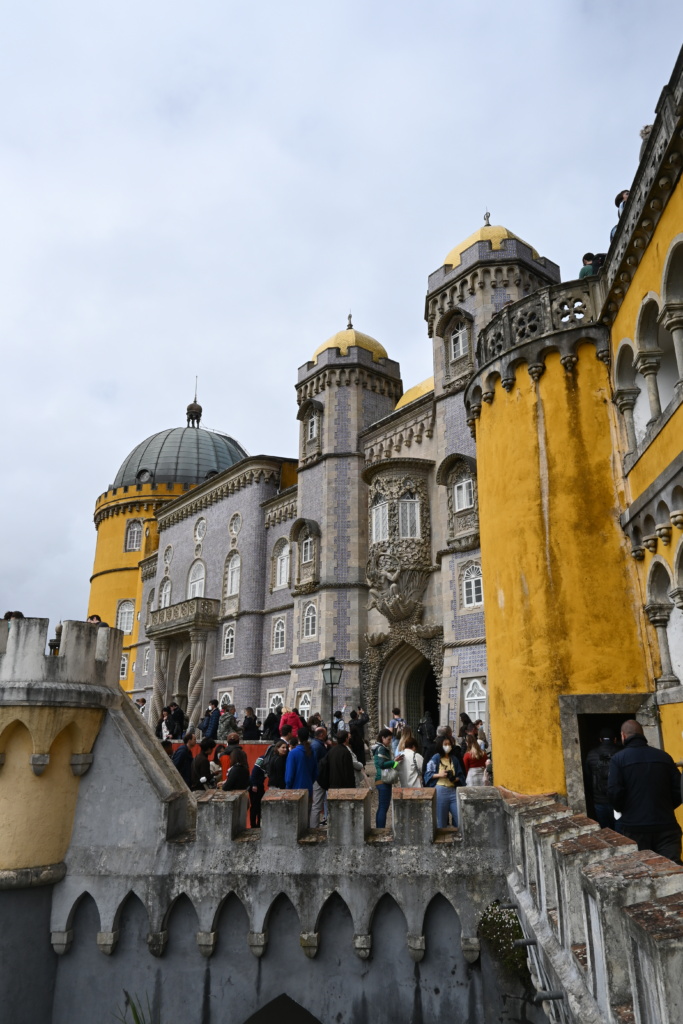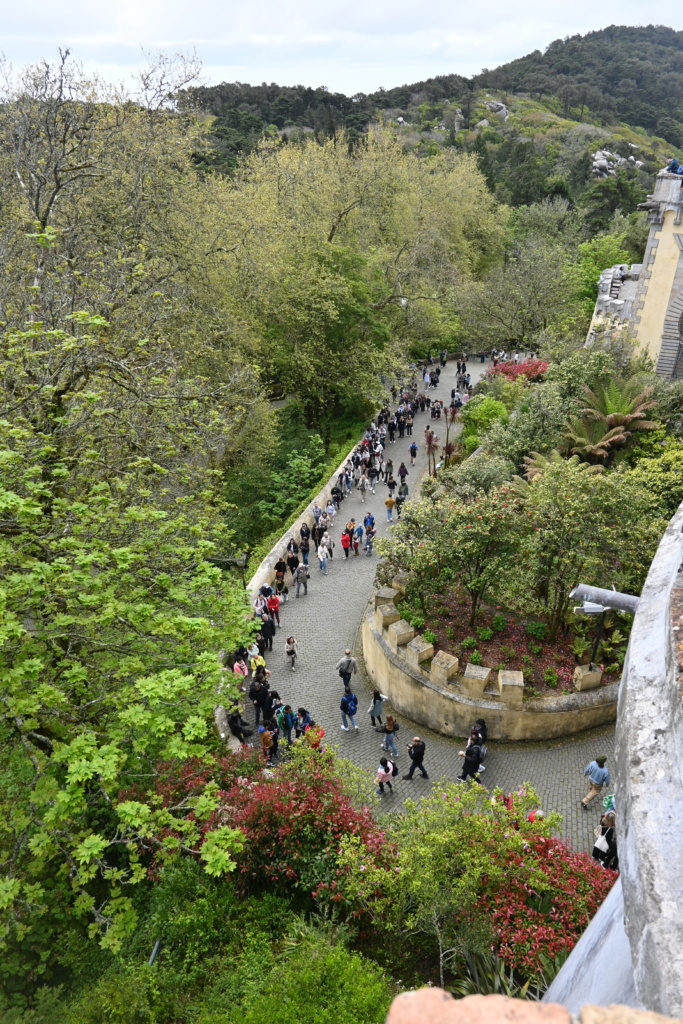The bright and colorful Pena Palace sits high atop a hill, its bold structure popping out from the lush green trees and gardens below. Featuring a Romanticism style of architecture, colorful towers, and mythological statues, the palace feels like it belongs in the pages of a fairytale. It seems impossible that such a fantastical castle exists in real life, but there it is, visible from Lisbon on a clear day.
With roots as a 12th century chapel, a monastery was built on this site in the 15th century. The original monastery structure sustained significant damage during the Lisbon earthquake of 1755 and lay in ruins for almost a century until it was purchased by King Ferdinand. In the 1840s, he rebuilt and expanded the monastery into a palace so that it could serve as his summer home. The palace’s signatures bright colors actually delineate the old and new sections – the repaired original structure was painted red while the new buildings were painted yellow.
Pena Palace is one of the most popular tourist attractions in Portugal and you need to plan your visit accordingly. If you are coming from Lisbon, it is recommended to take the earliest available train or bus. Thankfully we had spent the night in Sintra and were able to get an early start. This was our third day with Igor from Porto Tours and Transfers, and we were lucky to have his guidance as the many steps involved in a visit can be a little tricky. He picked us up early and we headed up the mountain. As a tour guide, he was able to park in the lots near the ticket office entrance. If you are not with a guide, you will have to take a bus or tuk tuk to the ticket office or make the hour-long hike on foot.
There was already a decent line to buy tickets, and we found that the line for the kiosks moved faster than the line for a real person. We bought the “Palace and Park” ticket, which allowed us to visit the interior of the palace at a specified time. (Although we were there shortly after the park opened at 9:30, the first interior entrance time available was not until 10:30.) We also bought a ticket for the shuttle to take us up to the base of the palace. Although after the car ride it felt like we had already reached the top, it was actually a good bit further to get to the palace itself. While the hike from town to the ticket office is not recommended because it is long and on narrow windy roads with no sidewalk or shoulder, if you have the time and inclination, the hike through Pena Park to get to the palace can be really enjoyable.
We took the faster option though and rode the shuttle to the palace. We were dropped off at the base and were immediately awed by the huge structure towering above us.
We wound around the path to get to the main entrance. The elaborate stone carvings surrounding the arched entrance gate are an example of Manueline (Late Gothic) architecture, one of the many architectural styles found throughout the palace.
We continued to wind our way through the different levels of the palace, stopping to peek into towers, climb turrets, and admire views from the terraces.
One of the most stunning features of the palace is the Arch of Triton. On a section of the palace that is covered by gorgeous azulejo tiles, a stone merman looks down menacingly over the arched gateway. The statue of triton represents a merging of land and sea. The figure sits on a large conch shell, with coral and waves below him. He is holding a tree on his shoulders, its leaves and branches spreading out above him. It is a truly stunning site and we stood there for quite a while taking in all its details.
Passing under the Arch of Triton, we arrived at a the Courtyard of Arches, a beautiful terrace overlooking the countryside. The colorful yellow archways framed the stunning landscapes below.
From this terrace you can visit the chapel. Rebuilt from the original Monastery Church of Our Lady of Pena, the small chapel’s altar dates from the early 1500s. Opposite the altar, the chapel’s stained glass window, which was commissioned by Ferdinand II in 1840, features religious and political images, including one of the king holding a model of the palace.
After leaving the chapel, it was time for our ticketed entry to the inside of the palace. We headed down to the interior entrance, only to find the line snaking back almost to the entrance gate. We begrudgingly joined the line, shocked at how quickly it had backed up. While we waited, Igor multitasked and attempted to call the Lisbon airport again in hopes of tracking down my lost luggage. After about half an hour, we made it to the entrance to the palace interior.
We followed the very slow line around the Manueline Cloister, part of the original monastery. The square cloister has two stories and is open-air. The tiles on the ground and the walls have faded but still show signs of their former glory. The kids loved the different gargoyles that topped every pillar. There were small rooms off of the courtyard that you could peek into, including a bedroom and a dining room.
After 15 minutes of standing nose to back in a line of people, we had barely made it around the cloister. So that means that 45 minutes after getting on the line at our entrance time, we weren’t even technically inside yet! We made the call to abort the mission. While I’m sure the inside is amazing to see and fascinating to explore, for us the highlight was the exterior. We were willing to skip the inside in order to see more of the outside and to have more time at Quinta da Regaleria, our next stop.
So we took the next set of stairs and headed towards the exit. We headed back to the Courtyard of Arches so that we could walk around the outer wall of the castle. From here we got a great view of the Moorish Castle, as well as a cool side view of Pena Palace. Oh – and a view of the line to tour the interior snaking well outside the palace entrance!
After walking all the way around the castle walls, we left the palace and made our way back down to the shuttle. I was completely blown away by our visit to Pena Palace. Even after being there and walking around the palace, it was hard to believe that it was real. The vivid colors, varied architectural styles, and stunning details were as amazing up close as they were from afar. I don’t regret at all skipping the interior of the palace. I know it could never have topped the exterior, and waiting for hours on a line of wall to wall people (at the height of a covid wave no less) would have probably taken away from the overall experience. In this case, less was more and just exploring the grounds alone was more impressive than I had even imagined.
